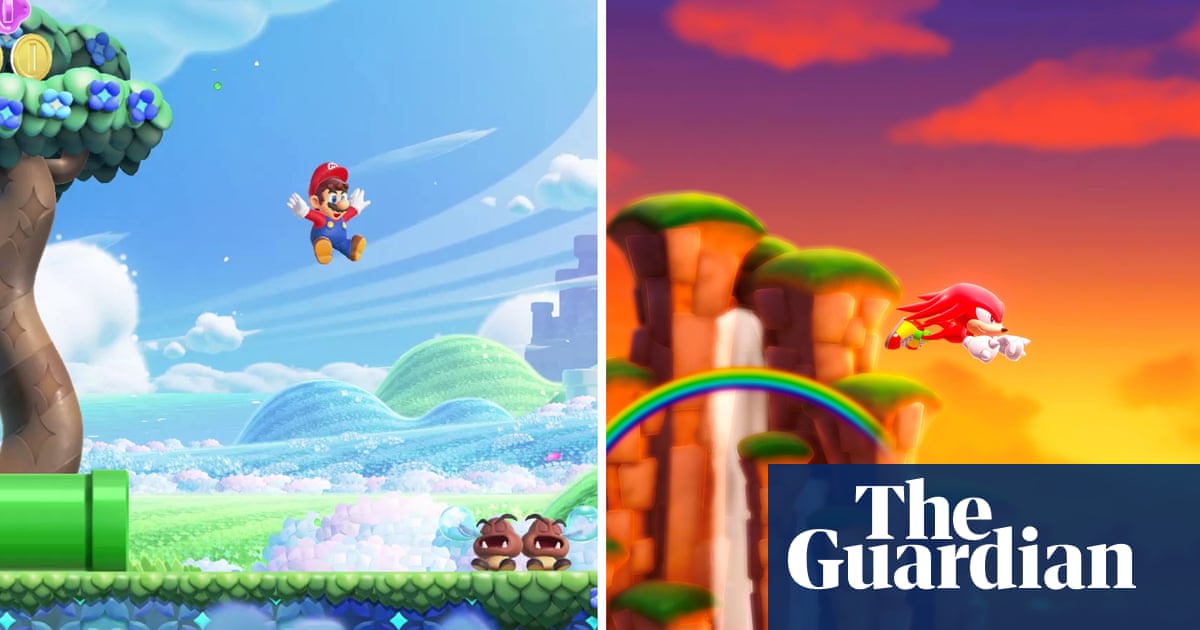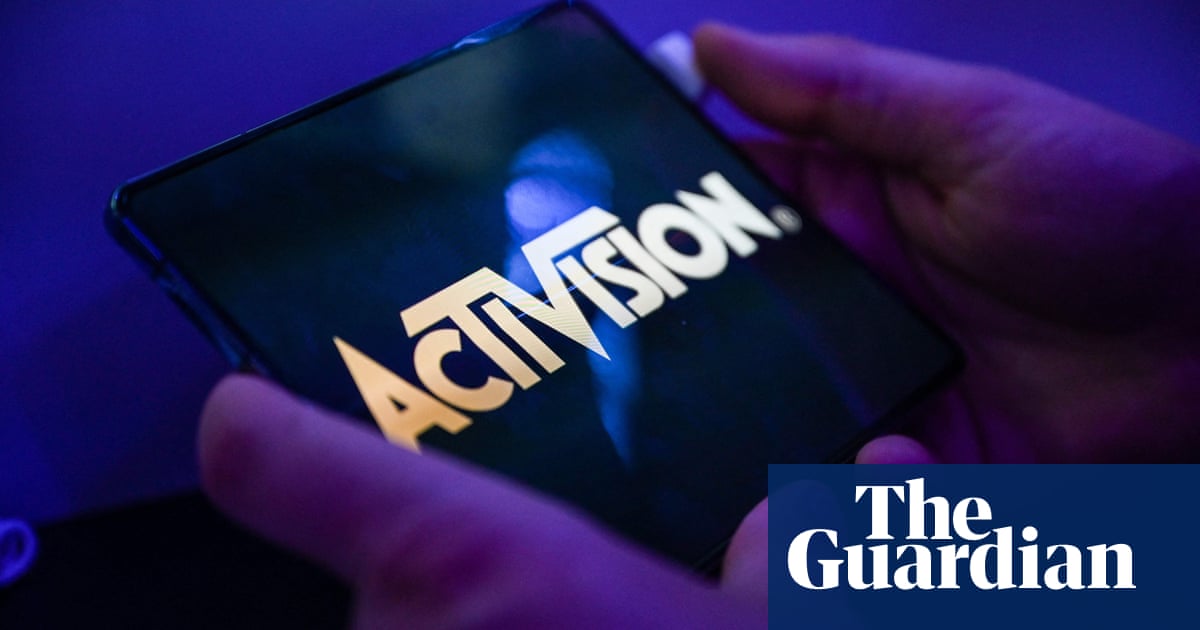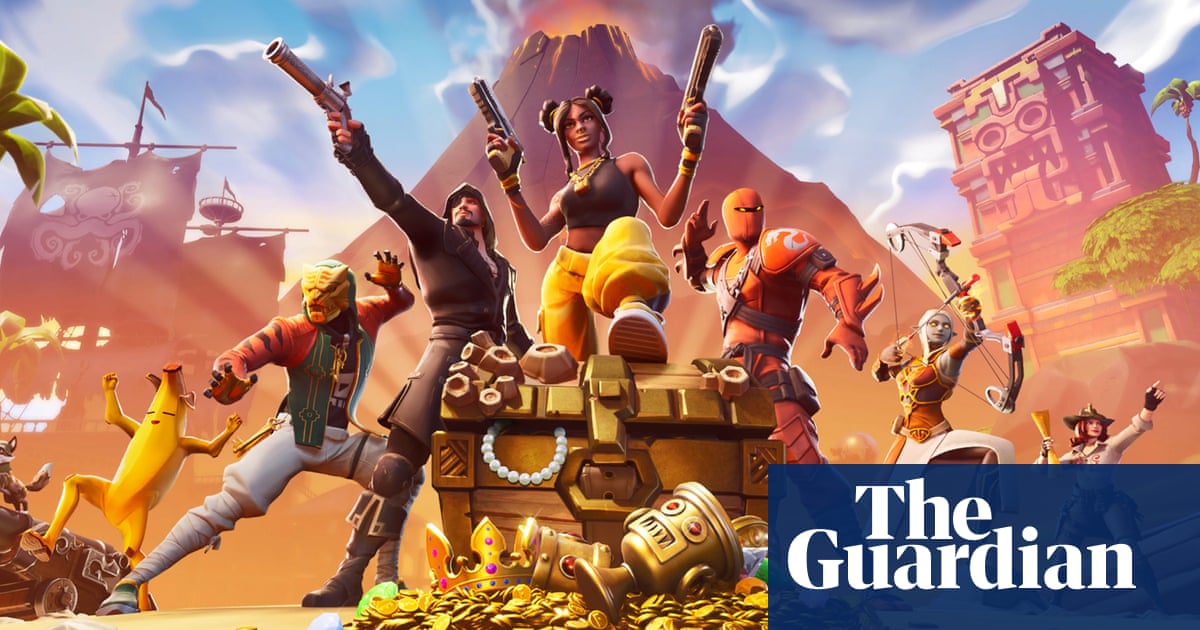
Rivalry is a vital element of fandom. Whether its punks v rockers, Star Trek v Star Wars or Marvel v DC, subcultures have always defined themselves by what they’re not as much as what they are. Which is why I’m secretly delighted that Sega and Nintendo are apparently releasing their new Sonic and Mario games within days of each other this October. Both Super Mario Bros Wonder and Sega Superstars are nostalgic callbacks to the era of 2D platforming. Both games allow players to select from a range of classic characters and take on the rich, lushly colourful environments in cooperative modes, and both supplement the retro aesthetics with new abilities. Mario can transform into an elephant and use his trunk to batter enemies. Sonic can harness chaos emerald power to, say, transform into a watery version of himself so that he can swim up waterfalls.
After visiting the Summer Games Fest in Los Angeles earlier this month, I am thrilled to hear other attendees vividly debating the merits of the two titles. At the Summer Consumer Electronics Show in Chicago in 1991, Sega made its rivalry with Nintendo the theme of its stand, where the Mega Drive console (known as Genesis in the US) was being shown to American audiences for the first time. Visitors could watch a video demo of Sonic the Hedgehog playing side-by-side with Super Mario World on a big CRT monitor in the centre of the space. While the latter was sedate, comfortable and somewhat childish, Sonic pelted across the screen like a comet, synth-rock blaring. Famously, when tech reporters tried to talk to Sega about the much smaller colour palette of the Mega Drive hardware compared to the Super Nintendo, Sega’s then head of marketing Al Nilsen would point at the games running side by side and yell: “Which has more colours? Can you tell? Nobody cares!”
For years, Mario has won this battle easily. While Mario games have consistently been wonderful explorations of design and technology – Super Mario 64, Super Mario Galaxy, Super Mario Odyssey – Sonic’s back catalogue is … patchy. For every Sonic Rush, there’s a Shadow the Hedgehog. (I can’t go on, it’s too painful.) Anyway, in 2023, where the companies have moved in very different directions, the arrival of Super Mario Wonder and Sonic Superstars (with Knuckles pictured top right) so close together feels more like a statement about the industry than an attempt to outdo each other. Game development has become bloated and ruinously expensive, with open 3D environments requiring years of work, vast teams and bleeding-edge physics engines. Taking these games back to their roots has no doubt allowed Sega and Nintendo to focus their efforts and produce gorgeous-looking games with smaller teams in shorter production cycles.
It’s no coincidence that Ubisoft has also taken a similar route with its latest Prince of Persia title, subtitled The Lost Crown, due for release in early 2024. It’s a multi-directional scrolling adventure taking in palaces, caves and dungeons, with lots of pixel-perfect jumping, and featuring a rewind mechanic for when you inevitably fall into a pit of spikes. I played a demo at Ubisoft’s showcase in Los Angeles and the 2D visuals brought back the sharp precision of the original titles. It was a real pleasure. I think if this is a success, we’re going to see the company bringing more of its titles back into 2D – some of my favourite Splinter Cell titles were the 2D adventures produced for early gaming mobile phones, by partner company Gameloft. I’d love to see something like those again. Interestingly, at the LA event, Ubisoft also showed Assassin’s Creed Mirage (pictured below), the latest title in the open-world assassination sim – only this time, the whole adventure is confined to one city. Even with 3D games, publishers are looking at ways to rein in spiralling production costs.
Of course, independent game studios have been exploring and experimenting with 2D visuals throughout the last decade, from the haunted realms of Inside to the colourful carnage of Super Meat Boy, and there are some treasures still on the way, including Oxenfree II: Lost Signals, Everdeep Aurora and Mineko’s Night Garden. In the PC indie world, the key genres are roguelike fantasy adventures, deck-building games and “Metroidvania” platformers – all of which use 2D visuals in interesting, expressive ways.
But the return of Mario v Sonic brings with it a layer of reminiscence that will feel personal to a lot of veteran gamers. The pipes of Mushroom Kingdom, the pinball bumpers of the Green Hill Zone, the sound effects, the enemies – these are entrenched memories, as vital and emotional as pop choruses or Star Wars battle scenes. I sometimes wonder if it became harder to store visual memories of game worlds in the 3D era – too much space, too much to see and recall. You experienced 2D platformers like a book, from left to right, each discrete stage a single chapter. You didn’t just play Sonic and Mario, you read them. I could probably play Green Hill Zone with my eyes shut, just as I can recall great chunks of the Shakespeare, Larkin and Fitzgerald I read at school and university.
Rivalry is a vital element of fandom, but so is community and shared memory. Sonic and Mario are replete with the stuff – they are memory machines. I’m happy to see them duel again, although this time, I won’t have to stay on the Sega side; I can play both. Nostalgia is fine, but progress is crucial.
What to play
I’ve only just started Mask of the Rose, a new narrative adventure from Failbetter Games, the ludicrously creative team behind Fallen London and Sunless Sea. It’s part visual novel, part dating sim, set in the studio’s vision of an alternate gothic London, foggy with intrigue and monstrous threat. Players craft their own stories and complex relationships while investigating a grisly murder. There are elements of Alan Moore and Sarah Waters in the writing and setting, which I love, and the way narrative is systemised is really intriguing. Give it a go, if you want to see how games can approach stories in a very different way to other media.
Available on: PC/Mac, Nintendo Switch (coming to PlayStation and Xbox soon)
Estimated playtime: 20+ hours
What to click
Final Fantasy XVI review – sophisticated spectacle is a breath of fresh air
Xbox chief Phil Spencer on AI: ‘I’m protective of the creative process’
Super Mario leaps back to 2D as Nintendo goes retro
What to read
The most bizarre example of over-enthusiastic fandom seems to have taken place at a recent Nintendo shareholder conference call. The meeting was disrupted by a fan of Splatoon 3 who bought $3,500 in stock just to complain about the game’s customisation options. Seems reasonable.
YouTube’s parent company, Google, seems to still have cloud-gaming ambitions, even after the collapse of the Stadia streaming service in 2022. The Wall Street Journal has reported that YouTube is testing a games service that will allow users of the video-sharing platform to play games on its website or phone apps.
Call it Forza Horizon x Barbie. This is the kind of video game movie tie-in I can get behind: open-world driving sim Forza Horizon 5 is getting two free downloadable cars from the forthcoming Barbie movie. Fans will be able to drive Barbie’s 1956 Chevrolet Corvette or Ken’s Hummer. Meanwhile, Wimbledon and Nike have each announced new partnerships with Fortnite, creating their own branded environments for the still-popular battle royale game. For better or worse, the metaverse is already here.
If you’re looking for a video game-themed comic to get into, I can recommend Arcade Kings from Image Comics. It’s a bright, colourful family drama set amid the competitive gaming scene in the fictitious Infinity City. Great script and some interesting ideas.
Question Block
This week reader Rob asks: Following the announcement that Starfield’s “physical” edition won’t come with an actual disc (just a code), are we increasingly heading towards a digital-only world?
As a quick clarification, Bethesda later confirmed that the Xbox version of Starfield will come with a physical disc, but it looks like it’ll just be a code on PC. Anyway, to answer your question, digital-only is almost inevitable for the games industry: it’s cheaper from a manufacturing and distribution standpoint, and it gives publishers complete control over the code and the way players experience it – it can be patched, altered, updated and even deleted without there being a physical artefact to worry about.
This is a concern for a lot of players, however, because as a consumer you don’t own anything, you’re at the whim of a corporation, and if the game requires online connectivity (which most digital games do), then you could lose the game and everything you’ve done in it if the company behind it stops providing support or closes or is bought by another company.
There are also concerns about preservation. Museums and academic institutions will find it immeasurably more difficult in a digital-only industry to build games collections. We’ve lost many hundreds of early mobile phone games because the original digital platforms they were on are now defunct. Will the same happen to Xbox and PlayStation games? This industry has an extremely poor record when it comes to preserving legacy hardware and software, and if the big corporations can cut costs and better control their products through digital-only distribution, that’s what we’ll get – perhaps with the odd overpriced limited edition physical release for fans. Depressing stuff.












